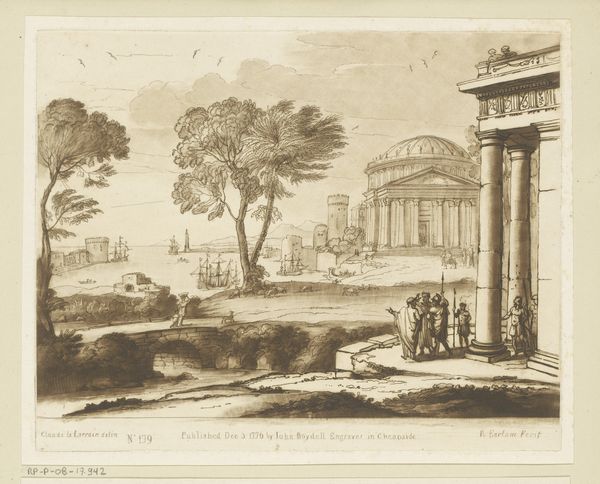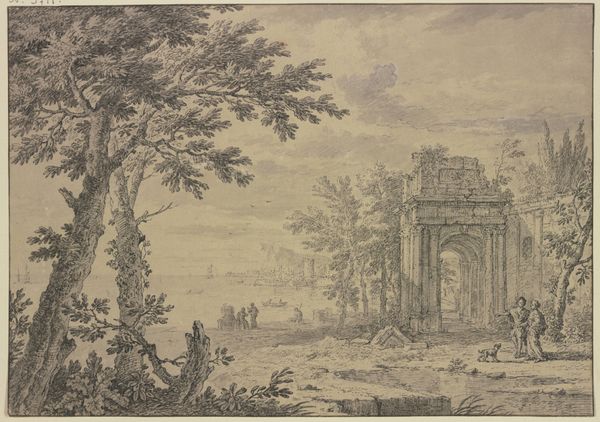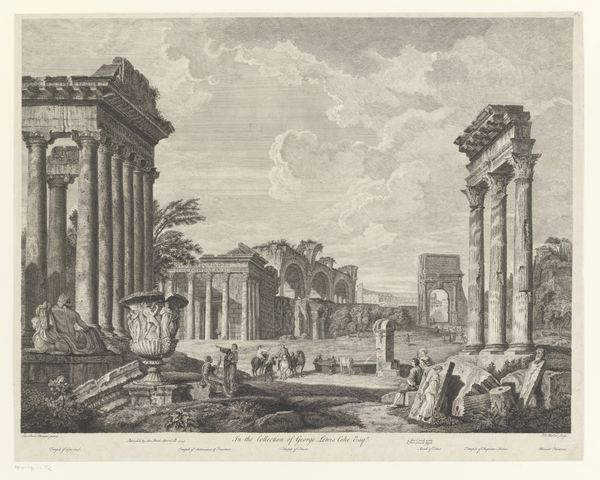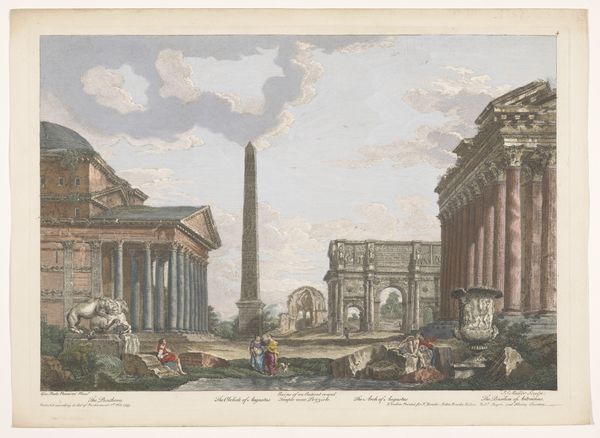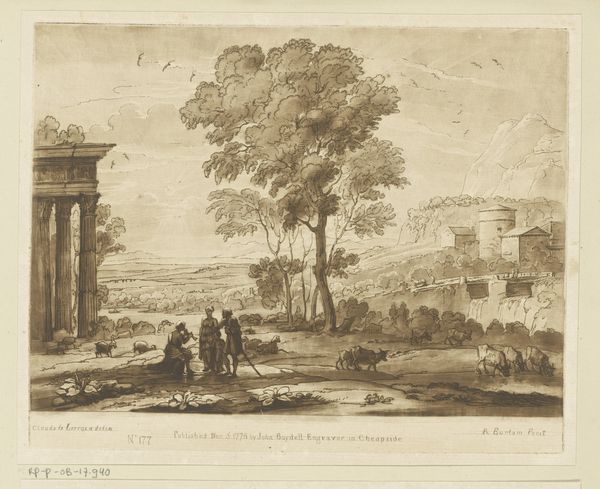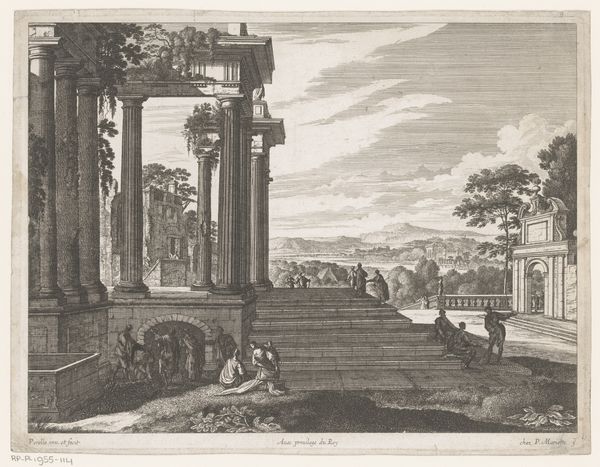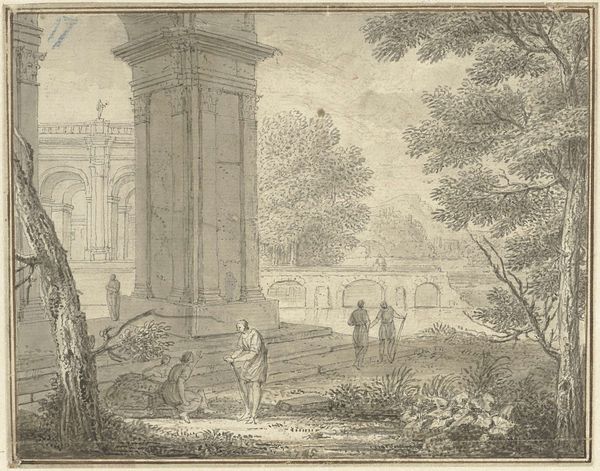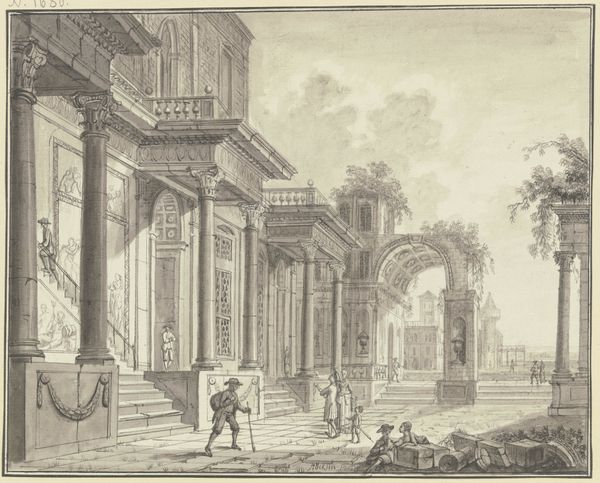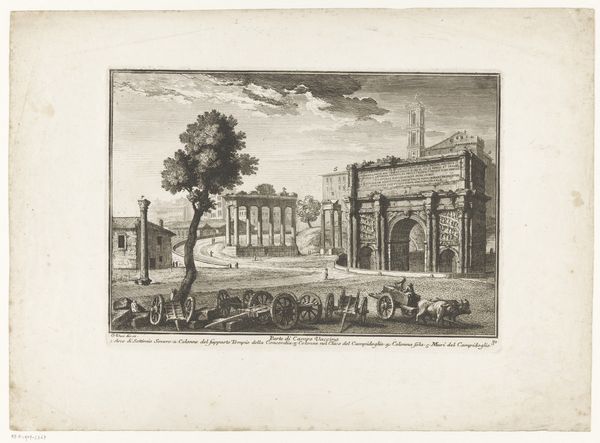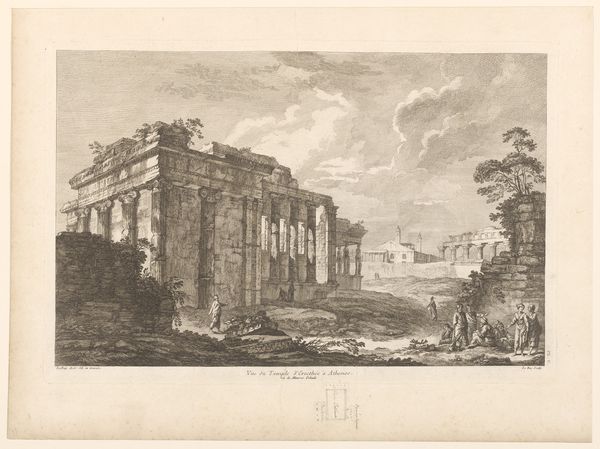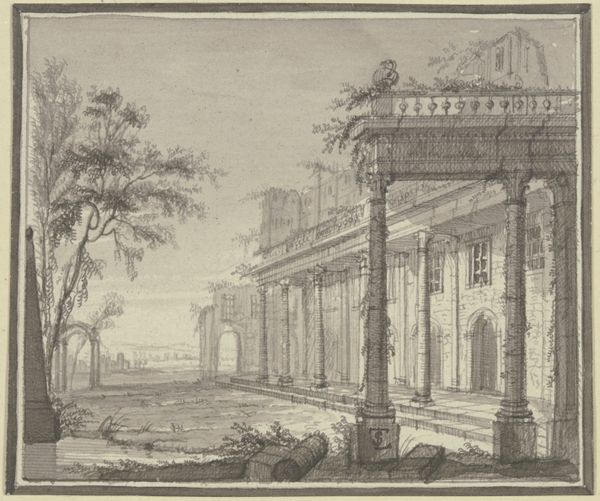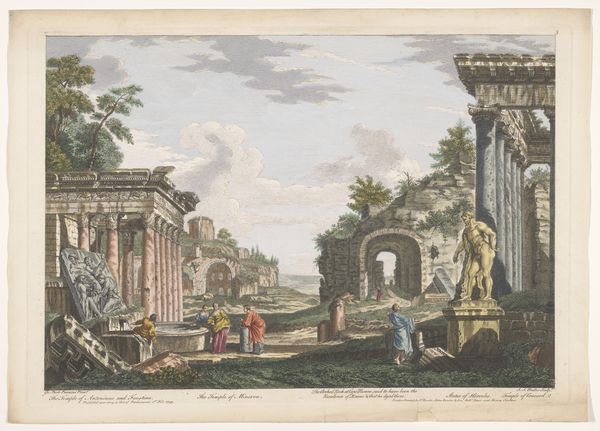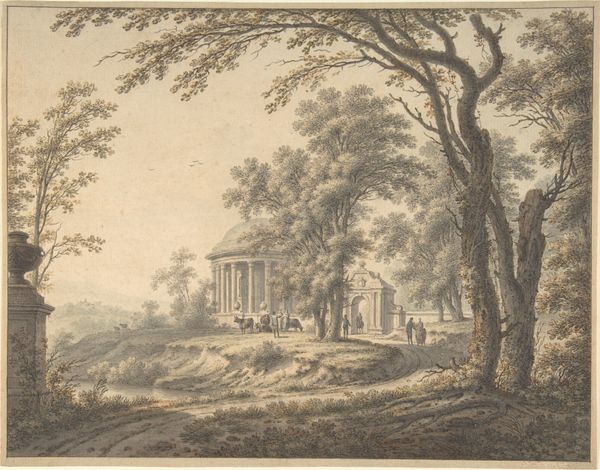
tempera, watercolor, architecture
#
neoclacissism
#
tempera
#
landscape
#
classical-realism
#
romanesque
#
watercolor
#
watercolour illustration
#
history-painting
#
watercolor
#
architecture
Dimensions: height 563 mm, width 781 mm
Copyright: Rijks Museum: Open Domain
Editor: This is "View of the Temple of Saturn in Rome" by Giovanni Volpato, made sometime between 1758 and 1803 using tempera and watercolor. I’m struck by how delicate it looks despite depicting such a monumental ruin. What's your take on it? Curator: It's fascinating how Volpato captures the ruins of Roman antiquity during the height of Neoclassicism. The careful rendering, the romanticizing of ruins… it all points to a very specific engagement with power and history. How does the presence of ordinary people in the scene affect your interpretation? Editor: It makes the scene feel more relatable, I guess. Like, the ruins aren't just these grand monuments, but also a space where people live their lives. Curator: Precisely! This contrast is crucial. Neoclassicism wasn't just about reviving classical forms. It was about invoking a specific narrative of Western civilization, one that often marginalized other voices. Notice the subtle suggestion of labour, but who benefits? How does this idyllic image mask the social realities of 18th-century Rome? Editor: So, it’s not just a pretty picture, it's a statement about power and who gets to control the narrative of history? Curator: Exactly! And by including those everyday figures, Volpato invites us to consider whose stories are often left out of the dominant historical record. How can we use this image to interrogate not just the past, but also how we construct our present? Editor: Wow, I never thought about it that way. It’s like the painting is prompting us to be critical of the stories we tell ourselves about civilization. Curator: Precisely! Art like this allows us to dissect how cultural narratives are constructed and perpetuated and challenges us to reimagine our own role in these systems.
Comments
No comments
Be the first to comment and join the conversation on the ultimate creative platform.
